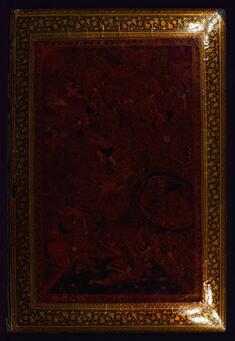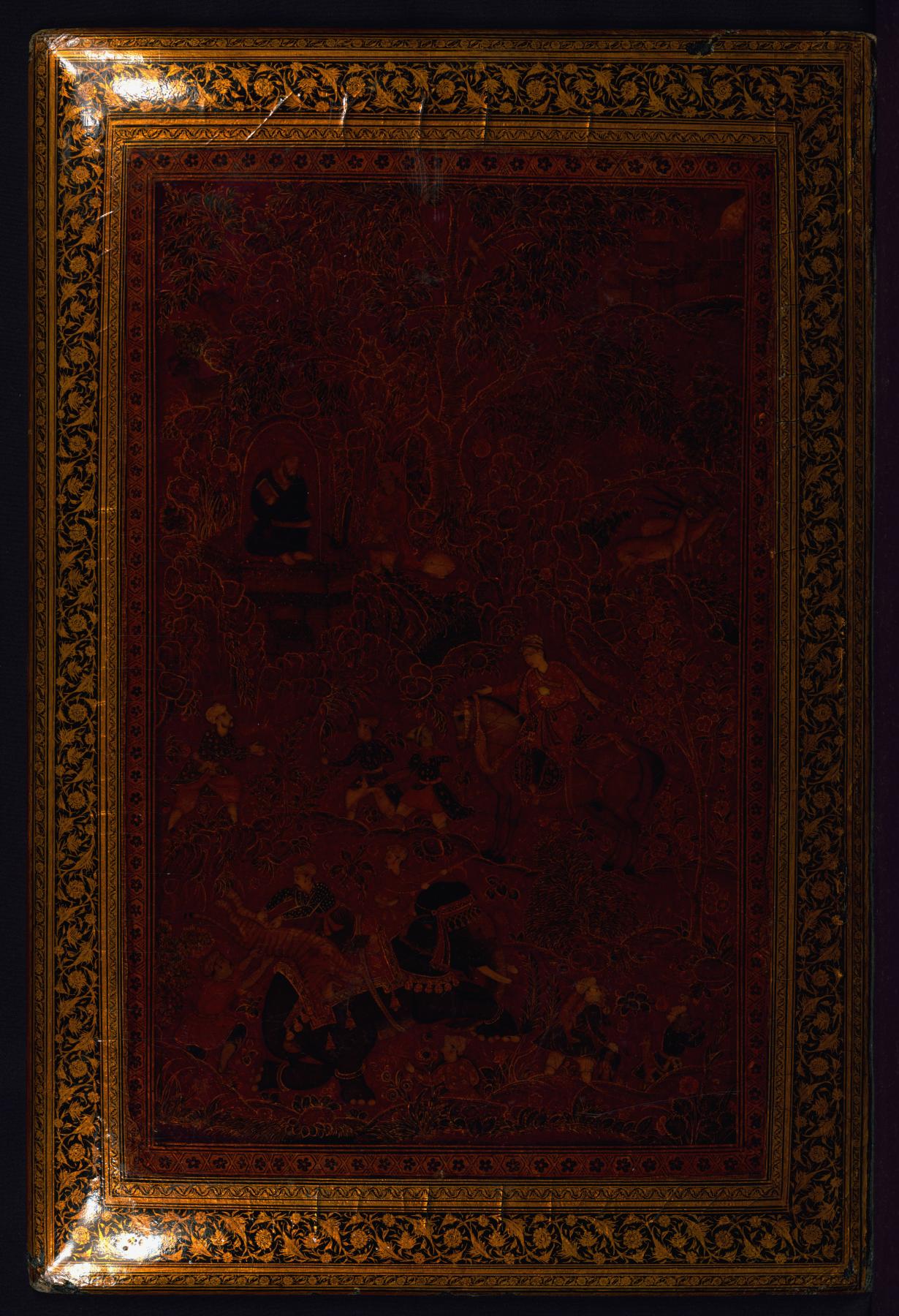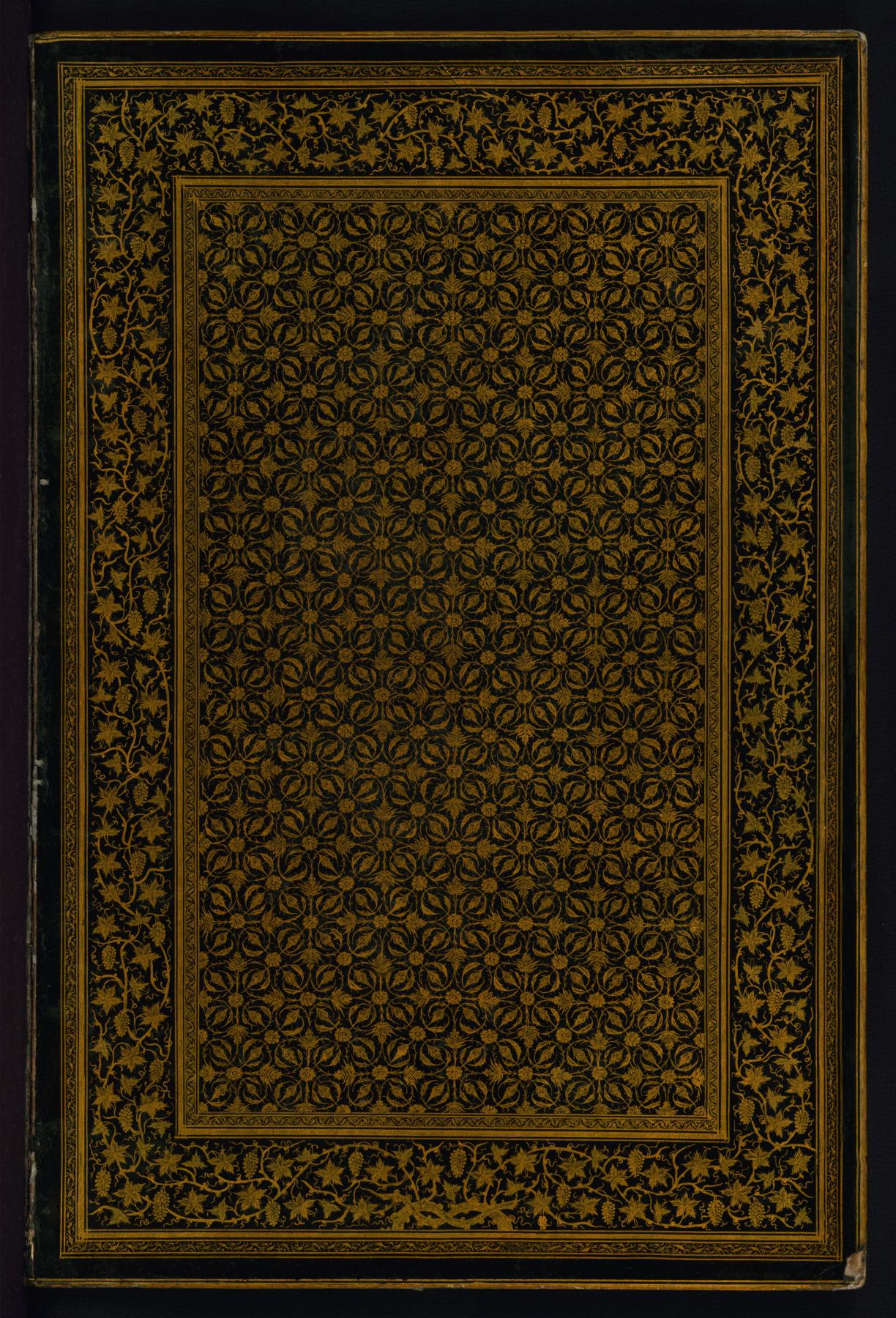Binding Boards from the Khamsa (Quintet) of Amir Khusraw Dihlavi
(Manuscripts and Rare Books, Islamic World , Islamic Manuscripts)
This binding from Walters manuscript W.624 is composed of lacquer with pictorial scenes. It is no longer attached to the manuscript and the covers are separated. The upper cover depicts an encounter between a prince and a reclusive sage; the lower cover depicts a host of fairies pummeling some outnumbered divs. The doublures are decorated with a field of small floral pattern. The binding was restored probably in Europe in the 13th century AH/AD 19th.
Provenance
Provenance (from the French provenir, 'to come from/forth') is the chronology of the ownership, custody, or location of a historical object. Learn more about provenance at the Walters.
Muhammad Zaki, 1241 AH/AD 1825-1826 [mode of acquisition unknown] [oval seal, fols. 1a, 211a]; 'abd al-raji Muhammad Shafi', 1247 AH/AD 1831-1832 [mode of acquisition unknown] [rectangular seal fols. 1a, 211a]; Muhammad 'Ali [date and mode of acquisition unknown] [large oval seal with no date on fol. 211a]; Henry Walters, Baltimore [date and mode of acquisition unknown]; Walters Art Museum, 1931, by bequest.
Exhibitions
| 2005-2006 | Pearls of the Parrot of India: The Emperor Akbar's Illustrated "Khamsa," 1597-1598. The Walters Art Museum, Baltimore; The Metropolitan Museum of Art, New York. |
| 1988 | Bindings from the Islamic World. The Walters Art Gallery, Baltimore. |
Geographies
Pakistan, Lahore (Place of Origin)
Measurements
Folio H: 11 1/4 x W: 7 1/2 in. (28.5 x 19 cm)
Credit Line
Acquired by Henry Walters
Location in Museum
Not on view
Accession Number
In libraries, galleries, museums, and archives, an accession number is a unique identifier assigned to each object in the collection.
In libraries, galleries, museums, and archives, an accession number is a unique identifier assigned to each object in the collection.
W.624.binding
Do you have additional information?
Parent Object
Related Objects










